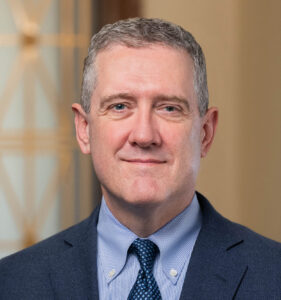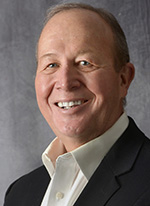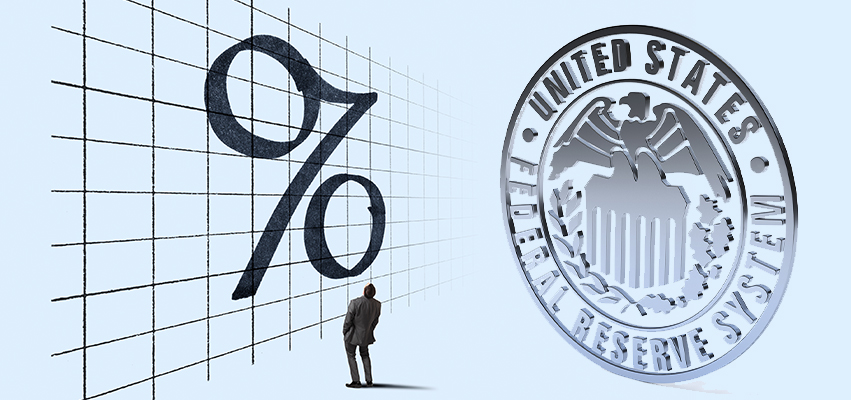
Welcome back to Peoria Magazine’s Econ Corner, a recurring feature in which we pose questions to experts about various economic issues and how they affect our lives and careers here in central Illinois. Doing this month’s Q&A is Jim Bullard, president and CEO of the Federal Reserve Bank in St. Louis and one of the most influential economists in the world. In that role, he participates in the Federal Reserve’s Federal Open Market Committee, which regularly convenes – and has been in the news a lot lately – to set the direction of U.S. monetary policy. This conversation has been edited somewhat for length.
Peoria Magazine (PM): Federal Reserve Chairman Jerome Powell has acknowledged that in hindsight, the Fed should have moved earlier to confront rising inflation. Was there something about this particular inflationary episode that allowed it to sneak up on many economists, that led them to believe it was “transitory,” in Chairman Powell’s words?
Jim Bullard (JB): I think so. This was all wrapped up with the pandemic and the large fiscal spending during the pandemic, combined with very easy monetary policy. The evolution of the pandemic made it so that it wasn’t clear when it was going to be over. In the spring of 2021, you had vaccines … developed but not widely distributed yet … The thinking around that time was that OK, the vaccines are going to be pretty successful and the economy is going to reopen and you expect some upward price pressures … because of that.
That reopening phase was one that you certainly had to factor in when you’re thinking about making policy … Actually, the vaccines worked very well. As of July … 2021, the deaths per day from the pandemic had come way down … It looked at that point like you might get a clean end to the pandemic … As it turned out, you had further waves …
All of these things were going on simultaneously as we were trying to make policy and look at the right moment to try to withdraw some of the monetary actions that we had put in place during the pandemic.
PM: The Fed is now acting aggressively to curb inflation with a “whatever it takes” posture, and we’ve begun to see the effects. Are there elements of the latter – the response to increased interest rates, for example — that have surprised you? Is this inflationary period substantively different in any way than those that have come before?
JB: I think the committee has moved rapidly to address the situation as it became clear that inflation was broader and more persistent than we thought. We started taking actions which really culminated this past spring … by increasing the policy rate by 25 basis points beginning in March but then going to 50 (basis) points at the May meeting and 75 basis points in the June and July meetings.
The 75 basis points at a meeting hasn’t been done for a long time. (Alan) Greenspan did it once in 1994, and if you want to get more than that, you have to go back into the (Paul) Volcker era. So quite a big response, but I think appropriate because the inflation rate has turned out to be much higher and much broader and more persistent than we initially thought.
Then in addition, we’ve got the runoff of the balance sheet. During the pandemic we bought a lot of government bonds that also helped mitigate the damage from the pandemic to the economy. But we stopped that in March and we allowed the balance sheet to start shrinking just a few months after that and that’s really getting going … Sometimes that gets forgotten, kind of a secondary tool … I’m hopeful that we can bring inflation under control with these kinds of actions and more to come in the future.
PM: Raising interest rates has long been called a “blunt” tool to address inflation. Can you discuss the other monetary policy tools at the Fed’s disposal, and their relative pluses and minuses?
JB: Those (listed above) are the main ones that we’ve used. Actually, former Chair (Ben) Bernanke once said that … we bungle the quote … but basically he said that “monetary policy is 98% talk and 2% action.” (Laughs) The forward guidance – publicly communicating the likely future course of monetary policy – has been quite important because if you look at the market interest rates, they all changed dramatically way before we did anything. To some extent, that repricing is already in the markets. …
I think it’s a different era … In the Volcker era, the Fed would raise interest rates, everyone would yawn and no one would pay any attention. So, he had to really work hard to gain credibility that … he and the committee were serious about fighting inflation.
We’ve got the opposite situation here … with all the transparency around monetary policy and all the communication and the years of having low inflation … I’ve been telling people, you know, we barely had to lift a pinky finger. We just started to raise interest rates during the March-April time frame. All the rates went up dramatically, and so in many ways, the future policy actions were pulled forward by financial markets … That’s an interesting feature and one that I don’t think everyone has completely digested, how different that is from the earlier (periods) … where that isn’t how it worked at all. You know, the Fed would move, and maybe the market would move later.
PM: The Fed faces a balancing act, of course, as too little intervention may fail to produce the desired price stability, and too much may so restrain growth as to tip the nation into recession. Meanwhile, there is no shortage of advice. How do you know when you’ve hit the sweet spot with your actions?
JB: Well, we’re getting plenty of criticism from all sides, so that makes me think that we’ve probably handled it about right … It’s not easy to track the economy. It’s a very large object — $20 trillion plus per year in total GDP and national income. We do that on many fronts, partly by looking at the data very carefully but also by talking to people on Main Street — business owners, household level, community development, all kinds of different parts of the economy — and try to get a sense of how they’re actually experiencing the economy. It can be very informative … Sometimes you might draw one inference from the data you have, and then you get a very different picture when you … seek out groups at a more local level. We’ll try to do the best we can to balance the two.
I would say about … whether we’re in recession or not that there’s a discrepancy … GDP growth has been negative in the first quarter and the second quarter of this year. Usually, the rule of thumb is that that would be a recession. But there is no actual hard and fast rule about that. Labor markets were very, very strong through the first half of the year, and it’s really hard to say there’s a recession when unemployment is 3.5 percent and you added 2.7 million jobs in the first half of the year …
This isn’t the kind of behavior you would expect if firms actually felt like it was a recessionary environment. They’d be cutting workers, not adding workers. So at least for now, it doesn’t look like we’re in a recession. Now others have been predicting that maybe we’ll be in recession in … 2023 sometime, but that’s a hazardous business, very hard to guess exactly how the economy will evolve over that kind of time horizon. So, I don’t think there’s a lot of information content to those kinds of forecasts.
PM: Obviously you weigh multiple benchmarks, but are there one or two that really stand out for you, that move your needle?
JB: Yeah, I do pay a lot of attention to inflation expectation because of my background and where my research was focused. I do like market-based estimates of inflation in the future … I think that gives us a sense on a day-to-day basis, in reacting to current data, what the market is thinking the inflation scenario is going to be in the future …
I’m very aware that markets don’t always get everything right … but nevertheless, you’ve got people with real money on the table, they’re trying to make the best guesses that they can and trying to use the financial market instruments that are available to hedge their risks against inflation, so I think that’s an interesting metric to keep track of and to use to try to get a sense of where we are with respect to policy.
Right now … expectations are down some, so that’s very helpful for us, but you do always have to be careful in interpreting exactly what’s going on.
PM: We sometimes talk about “first, do no harm” as a public policy goal, but are there measures the federal government should be doing – or shouldn’t be doing – to help rather than hurt the situation?
JB: I think inflation’s mostly a monetary policy issue. That’s why there are inflation targets for central banks all around the world. That’s why we’ve more or less decided over the last few decades that OK, we’ll let the Central Bank try to control the inflation rate and the economy, and we’ll let the federal government focus on taxes and government programs that they want to fund and so on. I think it’s a good division of labor. There may be a little bit of crossover from one to the other, but it … let the Central Bank focus on its primary task, which is to keep inflation low and stable.
PM: It seems that rank-and-file Americans are confused by the arguably conflicting messages they’re getting from some quarters. On the one hand, with nearly 60 percent of them living paycheck to paycheck and with interest rates on the rise, they’re told they should be saving. On the other hand, they’re told they need to keep spending because if collectively they don’t, it could put the economy into recession. Which is it? Is there a constructive role that consumers can play?
 JB: I think this has been a bit of a failure of macroeconomics during the time I’ve been involved, which is that we have not explained these tradeoffs very well … What we’re doing is raising interest rates. That’s going to make it less attractive to pull consumption from the future to today, and more attractive to push consumption from today into the future … You’re going to consume less today but more tomorrow … There’s the same amount of consumption, either way, but you’re trying to smooth it out a little bit so that you’re not consuming everything today at a big party and then nothing next year or the year after … That’s the point of the interest rate movements that we’re seeing …
JB: I think this has been a bit of a failure of macroeconomics during the time I’ve been involved, which is that we have not explained these tradeoffs very well … What we’re doing is raising interest rates. That’s going to make it less attractive to pull consumption from the future to today, and more attractive to push consumption from today into the future … You’re going to consume less today but more tomorrow … There’s the same amount of consumption, either way, but you’re trying to smooth it out a little bit so that you’re not consuming everything today at a big party and then nothing next year or the year after … That’s the point of the interest rate movements that we’re seeing …
PM: How sacred is 2 percent as an inflation target? Is that sort of a magic number for you?
JB: I think it is because it’s become an international standard since it was introduced in the 1990s. There was a lot of work at that time about whether this was a good number or not, and it kind of all settled down on 2 percent … We’re the biggest fish. If we abandon the target, all the other countries are going to do so, as well. I think you’d get global chaos if you did that.
PM: You’ve spoken in the past about your concerns regarding the “Fed’s credibility in Main Street America.” Where does that stand now, do you think?
JB: (Laughs.) We’re probably sinking. I’m hopeful that we can use the tools that we have now to bring inflation under control over the next 18 months or so. Hopefully, we’ll get on a disinflationary path that will be reasonable. I think … you’ll see that when firms make a judgement that they’d rather maintain market share rather than try to raise prices and possibly lose customers …
PM: What’s your view of the Fed’s dual mandate to promote maximum sustainable employment and price stability – two things that may be at odds now – which some have called for an end to?
JB: As far as the dual mandate, we’re hitting the employment side right now … so that’s why there’s so much focus on the inflation side, because that’s where we’re missing by a mile. So that has really shifted the thinking of the Fed. I like a mandate that focuses more on inflation over the medium term because I think it gives a better picture of what the Central Bank can actually do, but that’s maybe a topic for another day.
PM: Last question, and an important one. You grew up in Minnesota, and you’ve lived in St. Louis for a while now. Cardinals or Twins?
JB: (Laughs) Ah, well, being in St. Louis, I’ve really come to love the Cardinals. They’re very competitive. But this year the Twins also are doing well …
PM: So, World Series. You’ll be in heaven.





